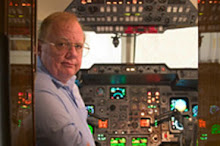If you like aviation, then I am sure that you saw the Howard Hughes movie, “The Aviator”, with Leonardo DiCaprio. The movie shows Hughes love of aviation, all the way from making movies about air warfare in World War I to designing aircraft for the Second World War and beyond.
The truth is that Howard Hughes was one heck of a pilot, and he set a number of records, including both the world land speed aircraft record and transcontinental seed record in 1935.
The story follows.
The Incredible Hughes H-1
The Hughes H-1 was designed by Howard Hughes and Richard Palmer who had degrees in physics and engineering. According to Palmer Hughes was “a good man to work for. Back then he was not the recluse he became later in life. He (Hughes) was basically a shy person but, when you got to know him, he was gregarious and fun to be with.” As the chief engineer Palmer was instrumental in starting Hughes Aircraft Company.
The Hughes H-1 was designed to be the fastest landplane in the world, and was built by a team lead by Glenn Oderkirk. The aircraft had a unique design which used flush rivets and joints with countersunk screws on the plywood wings. The ailerons would droop 15 degrees when the flaps were fully extended, and the flaps extended the full length of the wing to improve lift.
Another unique feature of this aircraft was the side windows which lowered into the fuselage, a windscreen which slid forward, and a sat which you could raise to afford more forward visibility for landing and takeoff. This was the first aircraft to have hydraulically retractable landing gear. In fact, the landing gear fit so perfectly that the fairings and door are difficult to see without close examination.
The aircraft was powered by a Pratt & Whitney Twin Wasp Junior radial piston engine which was rated at 700 horsepower at 8,500 feet, but which could deliver 1,000 horsepower for high speed flight.
When Howard Hughes set the landplane world speed record of 352.322 mph on September 13, 1935, the aircraft was fitted with the shorter wings. As a result of the lower fuel capacity, Hughes ran out of fuel during his last pass and was forced to belly land the airplane short of the runway. It is rumored that the H-1 reached a speed of 540 mph on that last pass, but this has never been proven.
Hughes broke the transcontinental speed record with this aircraft on January 19th, 1937. He departed
Back in the day Hughes did not need a sponsor, so the only markings on the aircraft were the registration number which was NR258Y. The numbers were painted a chrome yellow on the dark blue wings of the fuselage, and in black on the aluminum rudder.
This aircraft was a major achievement on the road to the aircraft of World War II, and demonstrated that a properly designed radial engine aircraft could compete with the lower drag in-line engines designs despite the larger frontal areas. Below is a photograph of the aircraft in it’s display at the Smithsonian:

